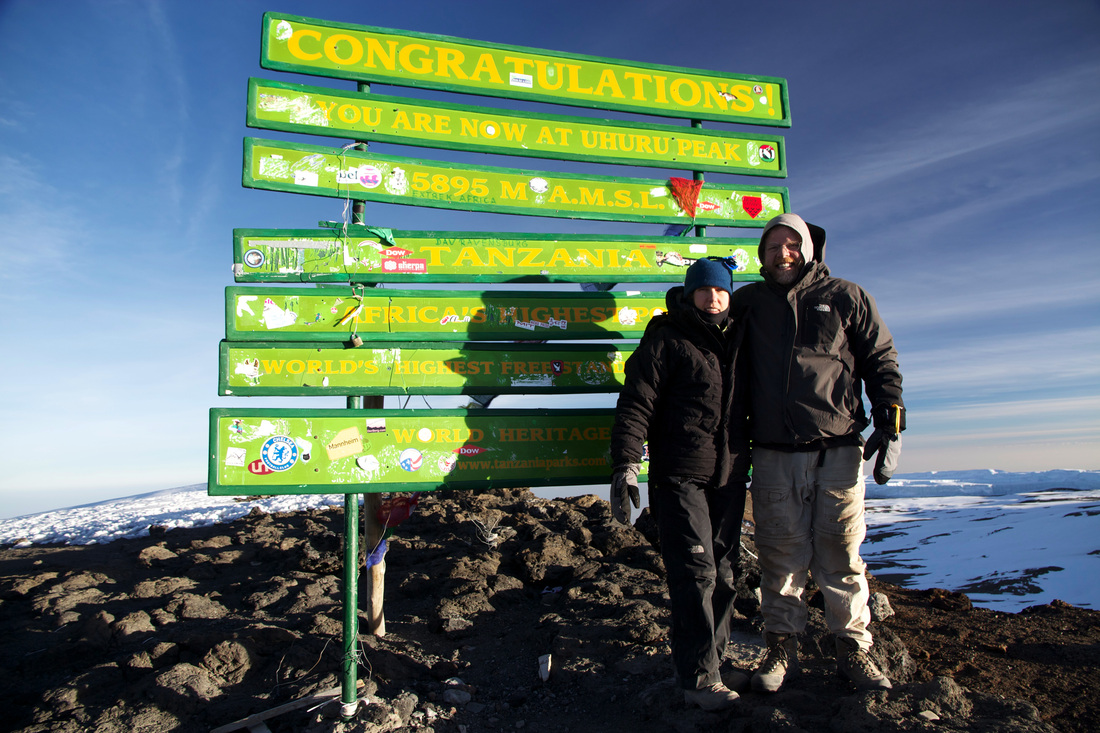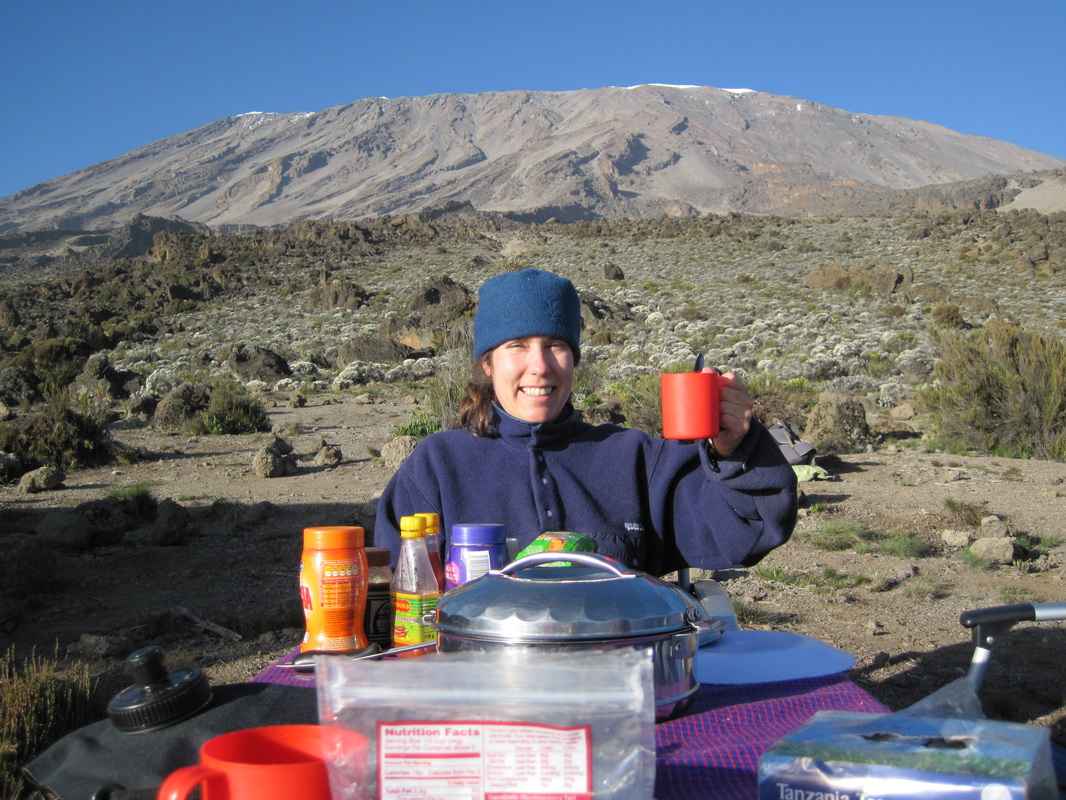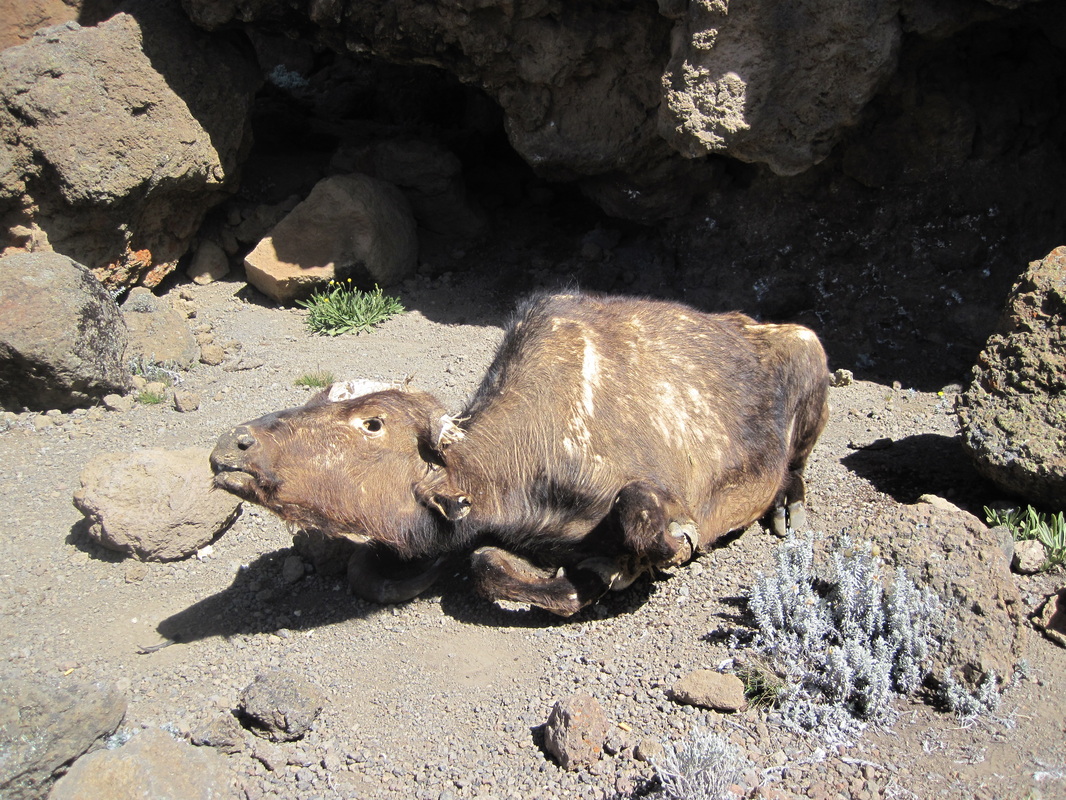Climbing Kilimanjaro Searching for Signs of Life – Dead or Alive
Step…pause….step…pause…step…pause. It’s 2:00 am and that’s the rhythm you are experiencing as you focus on slowly putting one foot in front of the other, climbing ever higher. You’re wearing five or six layers of clothing, including both a wool hat and a balaclava that cover so much of your face that you are unrecognizable to any other than your closest loved ones. You’re wearing mittens so thick that they render your hands useless except for hanging on to your hiking poles. Up ahead, you see a long line of bobbing lights and you realize they are the headlamps of all the other people also working their way slowly to the Roof of Africa, looking like a procession of giant fireflies. It’s still dark when you reach Gilman’s Point on the rim of the crater, and you only have 500 meters to go to make it to Uhuru Peak, the very top of the mountain. Those 500 meters take you over an hour, though, at your trudging pace. You feel that your life is dependent on the skills and decisions of the two guides who have led you the whole way and have already accomplished this feat dozens of times or more, and will do it many dozens of times more. With luck, you make it and see the most beautiful sunrise over the glaciers, above the clouds, with the moon still hanging in the sky. You are breathless from the beauty and the happiness at achieving the summit after more than seven days of hiking – not to mention the low level of oxygen. And you’re sad about having to leave the summit so soon, even though both your guides and your queasy stomach tell you it’s time to go down.
That was our summit experience on our recent trip to Tanzania to climb Mount Kilimanjaro, Africa’s tallest mountain at 19,340 feet. In celebration of my partner’s 40th birthday, he and I decided to join the 25,000-plus people who make this climb each year. He had dreamed of making this trek since age ten, after seeing a PBS documentary on it, and he spent nearly two years planning the trip – doing extensive research to choose the best guiding company, route, and timing for us. On May 31st, led by our excellent guides Leo and Felix from Team Kilimanjaro, we started our trek up the mountain. We were joined by a Canadian friend of ours currently living in Kenya, as well as twelve extremely capable porters (which sounds like a lot of support staff, but is fairly standard for a group of three climbers).
We started our trek at about 8,000 feet, and by the evening of the third day, we had hiked 22.1 km and made it to 13,668 feet. We would spend the next several days in the 13,000s before ascending to our “base camp”, School Huts, at 15,492 feet on day seven. Once we were above 13,000, it was time to start watching for signs of wildlife for the ASC project! On the first day, when we were still in tropical forest habitat, we saw black-and-white colobus monkeys and heard many birds, but by the time we were above 13,000 feet, we were seeing very few signs of wildlife. Very few mammals venture into the higher altitudes. On our way in to Moir Hut camp (13,688 feet), we found some droppings from buffalo. Leo, our guide, told us that buffalo (or their signs) are fairly commonly observed up to nearly 15,000 feet. We saw two more signs of buffalo along our trek – some fresh-looking tracks and a dried, whole buffalo carcass between 3rd Caves Camp (13,028 feet) and School Huts (15,492 feet). We took notes, photographs, and GPS coordinates of all these observations and sent them in to Doug Hardy, a climate researcher at the University of Massachusetts for inclusion in the project’s data set. Our guides told us that the buffalo carcass had been there for at least three years, but Doug didn’t have a record of it, so we were excited to add that observation.
Keep up with more adventures here on our blog as well as on our Facebook and Twitter (@AdventurScience) pages. Get involved in a project for your next adventure or support our mission by becoming a member.



